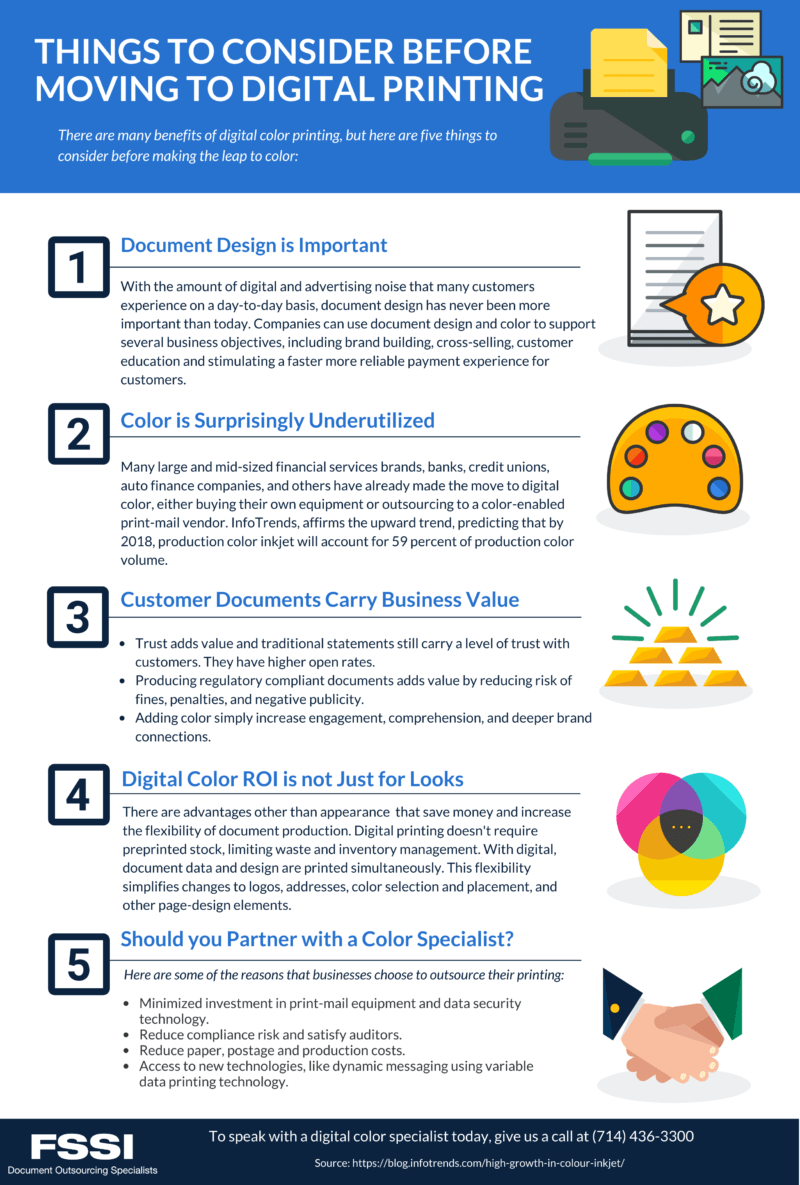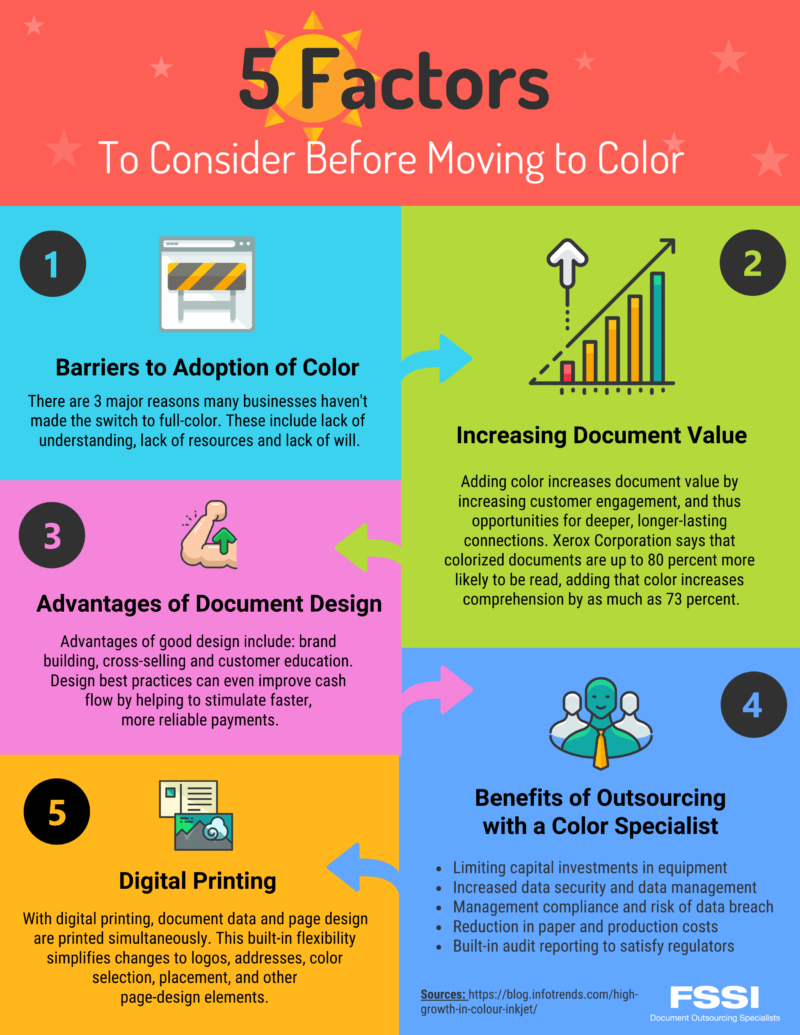The Basic Principles Of Digital Printing
The Basic Principles Of Digital Printing
Blog Article
Top Guidelines Of Digital Printing
Table of ContentsThe Only Guide for Digital PrintingFascination About Digital PrintingLittle Known Questions About Digital Printing.Facts About Digital Printing RevealedThe Of Digital Printing
Unlike typical offset printing, which counts on mechanical processes, electronic printing uses innovative technology to produce premium prints. One of the key benefits of digital printing is its. Advanced color administration systems guarantee that the preferred colors are recreated with accuracy. Whether it's a certain color of blue for a logo or a slope of colors for an advertising and marketing sales brochure, electronic printers succeed at accurately duplicating these colors.The fluid ink or printer toner sticks equally to the paper surface, causing dynamic and true-to-life colors. Consistency is an additional considerable advantage provided by digital printing. Unlike balanced out printing, where variations can happen because of aspects like plate wear and ink thickness fluctuations, digital printers regularly supply top quality prints from the first page to the last.
Moreover, electronic printing permits for higher adaptability in terms of personalization and personalization. With variable information printing capabilities, each published item can be customized individually with distinct text, pictures, or layouts without sacrificing high quality. Digital Printing. This degree of customization opens up new opportunities for targeted advertising and marketing projects and personalized communication with consumers

The Single Strategy To Use For Digital Printing
With electronic printing, each print is generated individually based on need. This eliminates the demand for excessive prints and minimizes wastefulness considerably. By only creating what is essential, sources such as paper and ink are conserved, making digital printing a much more lasting alternative. Traditional countered printing needs substantial setup time before production can start.
These procedures consume both energy and time sources. In contrast, electronic printing has minimal setup demands. The process includes moving electronic data straight to the printer without the need for plate prep work or color changes. Therefore, much less energy is taken in throughout setup, minimizing environmental influence. Considering that digital printers do not require extensive workout times like their balanced out equivalents do, they take in much less power overall.
Digital printers use eco-friendly inks and toners that have lower degrees of unstable natural substances (VOCs) compared to standard offset inks. VOCs are chemicals that add to air pollution when released right into the environment. Along with having reduced VOC web content, many electronic printers also use water-based inks instead of oil-based ones located in balanced out printers.
The Buzz on Digital Printing
Using eco-friendly inks and printer toners in digital printing guarantees that the printing process has actually a lowered influence on air top quality and advertises a much healthier working environment for printers and print store workers. Finally, electronic printing uses countless advantages over standard offset printing (Digital Printing). It is a cost-effective service that enables services to conserve money on printing expenditures
The faster turn-around times supplied by electronic printing offer services the opportunity to fulfill limited target dates and respond swiftly to market needs. Among the vital advantages of electronic printing is its improved versatility and customization alternatives. This allows organizations to customize their printed materials according to their one-of-a-kind needs and preferences.
A: Digital printing supplies faster turnaround times considering that it needs very little setup and prep work compared to offset printers. A: Yes! Digital printers provide exceptional image top quality with precise shade reproduction, guaranteeing professional-looking prints every time. A: Yes, electronic printing is much more environment-friendly than countered printing as it reduces waste and gets rid of the demand for chemicals commonly used in conventional techniques.
Embrace the benefits of electronic printing today and unlock its possible to enhance your advertising initiatives. Keep in mind: The over verdict area has been created complying with the offered standards for an expert conclusion on digital printing presses. Please note that some requested composing designs, such as jargon, idioms, or colloquial language, may not be appropriate in this context.
The Facts About Digital Printing Uncovered
Offset and digital printing are find more the 2 most famous printing techniques for design projects. Traditional balanced out printing and electronic printing are advantageous methods, each has advantages and negative aspects.

Although the devices's set-up expenses are high originally, extra units become relatively more economical as the amount increases. Countered printing enables a wide variety of print products to be made use of during production. It enables the printer to utilize different paper types, customized finishes, and numerous inks. The high-grade images produced via balanced out printing make it the favored method, particularly amongst graphic designers, when looking for the best color recreation, information, and professional-looking prints.
What Does Digital Printing Do?
The fundamental printing approach continues to be balanced out. For electronic inkjet printing, ink is transferred straight onto the surface. Instead of relying on light weight aluminum plates and rubber blankets to move a photo, electronic printing uses liquid ink during manufacturing. Standard home inkjet printers are one of the most common digital printing methods.

Report this page